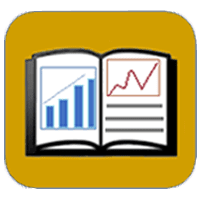Post-fire Environment & Management
View article.
Study found that expected sediment and phosphorus loads were lower under the scenario that emphasized thinning, whereas scenarios that increased prescribed burning resulted in loads that were comparable to scenarios that involved less treatment. These results reflect the finding from the WEPP analysis that prescribed burning is expected to reduce ground cover more than is thinning. Our analysis supports efforts to increase fuel reduction treatments to mitigate future wildfires, but it also suggests that preventative treatments may not avoid a long-term decline in water quality as wildfires increase with climate change.
Webinar recording.
Join presenter Erica Fisher for a summary of what we know so far about how structures in wildfires influence our water infrastructure and what can be done to potentially stop further contamination from wildfire events.
View article.
From following more than 1,500 wildfires, we find treatments were disproportionately applied in more stressful, degraded ecological conditions. Failure to incorporate unmeasured drivers of treatment allocation led to the conclusion that costly, widespread seedings were unsuccessful; however, after considering sources of bias, restoration positively affected sagebrush recovery. Treatment effects varied with climate, indicating prioritization criteria for interventions. Our findings revise the perspective that post-fire sagebrush seedings have been broadly unsuccessful and demonstrate how selection biases can pose substantive inferential hazards in observational studies of restoration efficacy and the development of restoration theory.
View article.
Local unburned reference communities had fewer herbaceous perennials and higher woody cover than NRCS reference communities, suggesting departure from conditions expected under minimal post-settlement disturbance. USCs became more similar to reference communities over time, though less so at a site with abundant invasive annuals. Trajectories of seeded treatments were driven by seed mix species, with native-only mixes approaching reference communities more closely than mixes with non-natives.
View report.
The average annual acreage burned by wildfires in the United States has increased over the past 30 years, affecting both federal and nonfederal lands. In this report, the Congressional Budget Office analyzes trends in wildfire activity; considers the effects of wildfires on the federal budget, the environment, people’s health, and the economy; and reviews forest-management practices meant to reduce the likelihood and seriousness of fire-related disasters.
View article.
These findings underscore that type conversion is a common outcome of high-severity wildland fire in the southwestern US. Ecosystem managers are frontline observers of these far-reaching and potentially persistent changes, making their experiences valuable in further developing intervention strategies and research agendas. As its drivers increase with climate change, vegetation type conversion (VTC) appears increasingly likely in many ecological contexts and may require management paradigms to transition as well. Approaches to VTC potentially include developing new models of desired conditions, the use of experimentation by managers, and broader implementation of adaptive management strategies. Continuing to support and develop science-manager partnerships and peer learning groups will help to shape our response to ongoing rapid ecological transformations.
Webinar recording.
Join the Rocky Mountain Research Station and the Southwest Ecological Restoration Institutes for an upcoming land manager-focused LIGHTNING TALK webinar dedicated to forest regeneration and reforestation in western fire-adapted forests. Short science presentations will highlight what is happening with regeneration following fire and forest treatments plus considerations and tools for reforestation. Discussion and Q&A during this session will facilitate information exchange between scientists and managers.
View article.
Post-wildfire extreme rainfall events can have destructive impacts in the western United States. Using two climate model large ensembles, we assess the future risk of extreme fire weather events being followed by extreme rainfall in this region. By mid-21st century, in a high warming scenario (RCP8.5), we report large increases in the number of extreme fire weather events followed within 1 year by at least one extreme rainfall event. By 2100, the frequency of these compound events increases by 100% in California and 700% in the Pacific Northwest in the Community Earth System Model v1 Large Ensemble. We further project that more than 90% of extreme fire weather events in California, Colorado, and the Pacific Northwest will be followed by at least three spatially co-located extreme rainfall events within five years. Our results point to a future with substantially increased post-fire hydrologic risks across much of the western United States.
View article.
The monitoring for adaptive management of the 2015 Soda Megafire area (113,000 Ha) sampled up to 2000 observation plots in each of five post-fire years, and provided important insights on challenges, solutions, and insights that can be applied to monitoring future burned areas.
Webinar recording.
Presented by: Travis Warziniack
Though National Forests are required to address ecosystem services and human benefits in planning and management decisions, most have limited capacity to meet those requirements. New tools are helping forests more easily identify impacts to ecosystem services and communicate their role in providing benefits to stakeholders. Moving toward nationally consistent methods will allow forests to more easily assess their ecosystem services, with the flexibility of adding local knowledge when needed.




